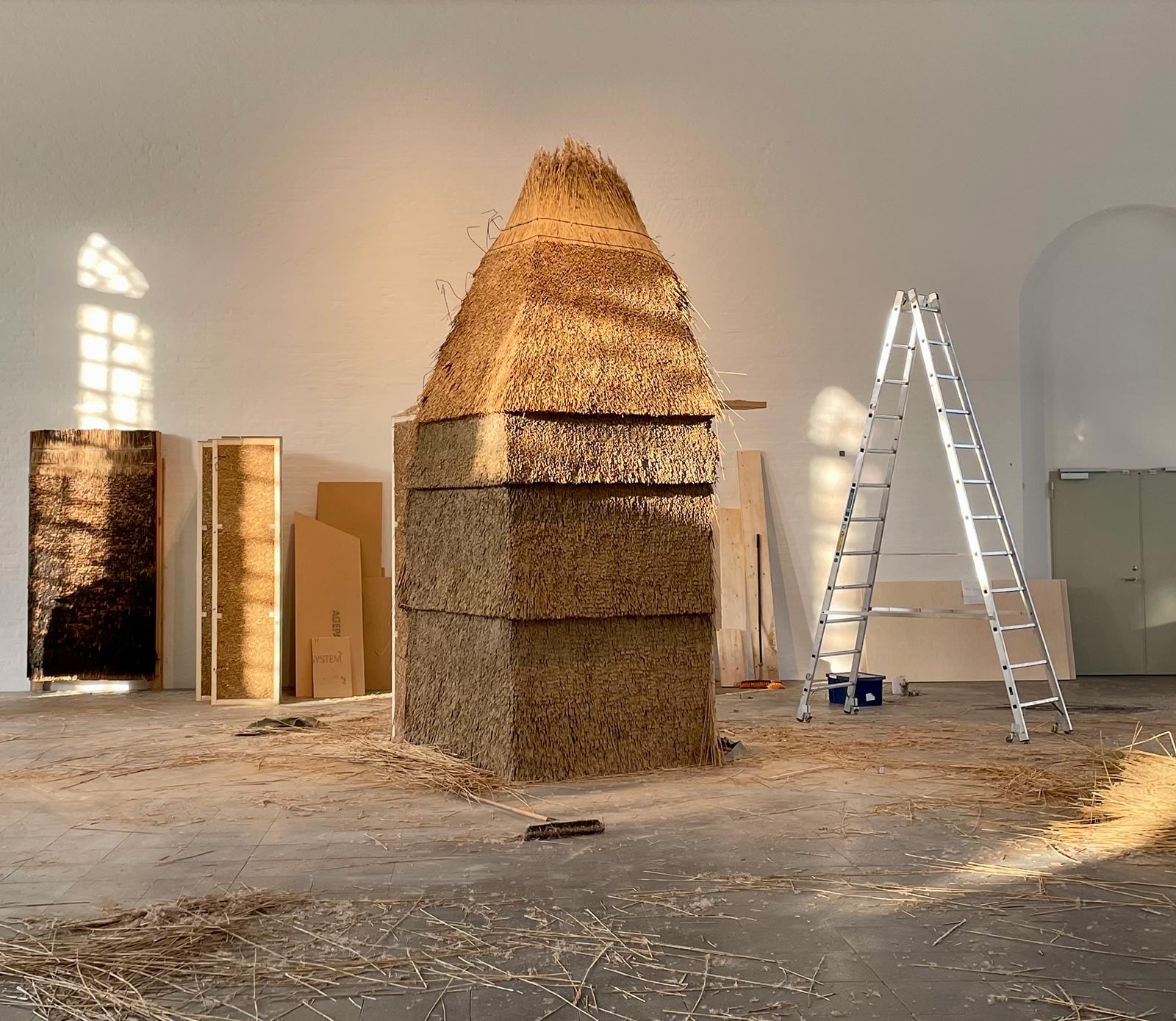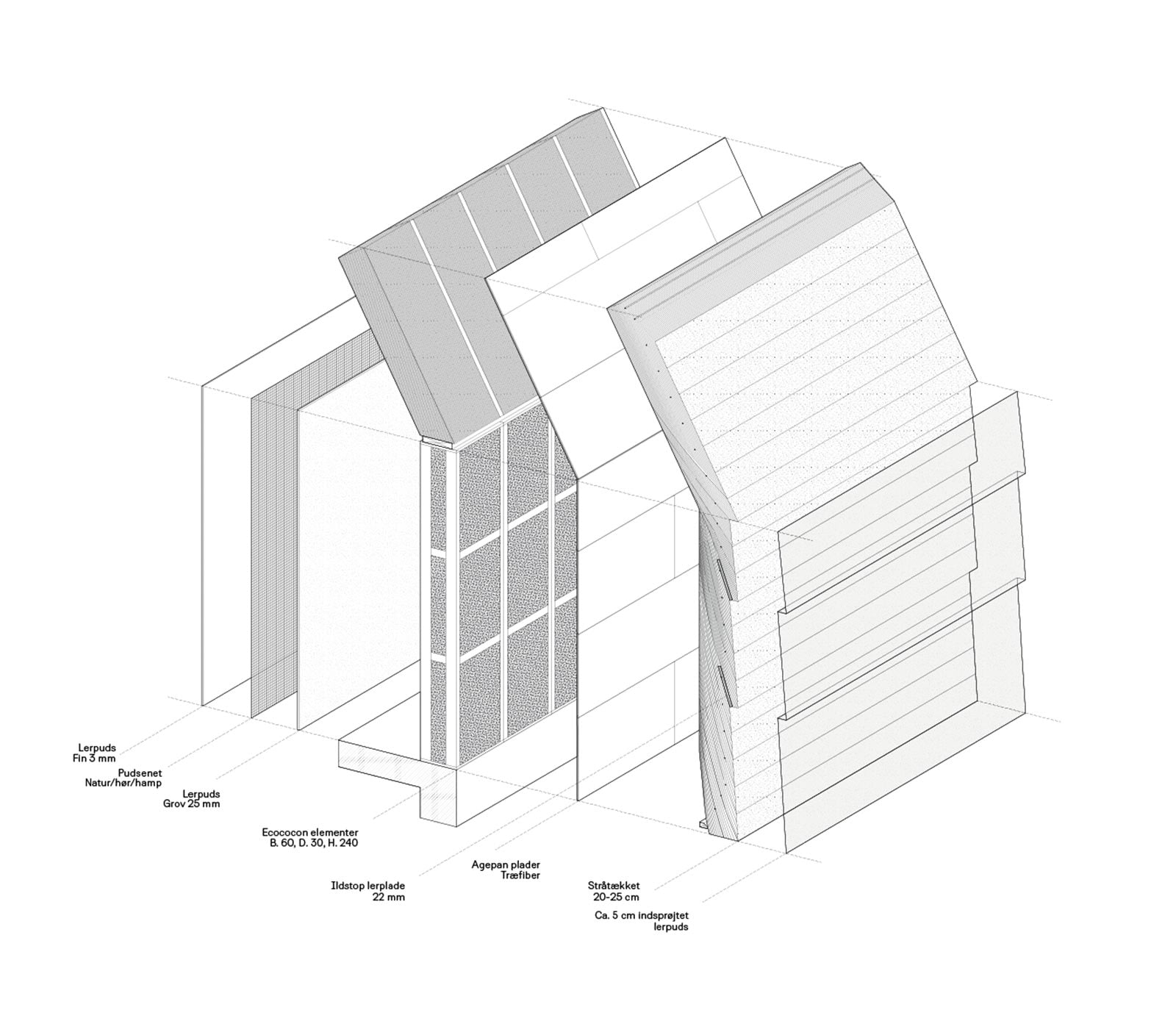Fri 16 Sep
12:40
Anne Beim, KADK
Thorbjørn Petersen, KADK
Resolving the conflict
Biogenic materials as reed hold great potentials to reduce the CO2emissions of construction. But use of reed has decreased – partly due to the fear of fire hazards and strict fire protections standards.
This project aims to develop and test new sustainable construction solutions with thatched building facades that are environmentally friendly and fireproof – and which can be scaled to an industrial level. The project looks at fire safety as it’s a key challenge in constructions with biogenic materials. Various types of clay mixtures for surface treatment have been tested as fire retardants in thatched building facades combined with clay plates built into the construction.
Research questions are:
- How to create architecture that contributes to the green transition by use of biogenic materials in construction?
- How to build in ways combining the best knowledge from traditional building culture/ -crafts with contemporary effective building methods?
The project divided into 3 parts:
- Mapping of central knowledge in historic and modern construction in Denmark and Northern Europe,
- Development, design, and prototyping of thatched constructions,
- Comparative fire tests of construction designs.
The Danish Eco Innovation Program is funding the research collaboration involving the Royal Danish Academy – School of Architecture (Lead), DBI The Danish Institute of Fire & Security Technology, and the Danish Thatcher Association, and clay expert of Egen Vinding & Datter.
Fire testing is a central element in the project. Thus, it was important to clarify how new construction solutions were to be tested and what sort of standards we should measure up against, and we had to clarify whether we should test fire protection of only the surface or the entire structure. Thus, the testing methods were specified in parallel to designing the new types of fire-protected constructions.
Full-scale testing of vertically thatched wall elements impregnated with moraine clay from the out-side in and with clay plates incorporated in the structure showed impressive results comparable to fire-class 2. Secondly it showed that craft-based technologies can act as innovative agents for new construction typologies. And finally, that multi-disciplinary collaboration between architectural researchers, fire-experts, and craftsmen can create results that offer new sustainable strategies for a conservative construction industry.
A combination of reed and clay for building constructions is interesting from a sustainability perspective, as both materials are “produced” locally with no heavy processing, also reed is 100% renewable. Constructions as these offer significant CO2reductions since little resources are necessary for production and transport, which is a prerequisite for leading the construction industry towards a 100% reduction of CO2 in 2030.
Thatched facades with biodegradable fireproofing (clay) have not been realized/tested in Denmark or internationally before now. Thus, the project results hold great potentials for further innovation of biogenic construction but also developing industrialized processes and products that incorporate craft knowledge. Thatched façades integrating clay as fire-protection applied in ways underlining the tectonic ideas are realistic alternatives to conventional construction materials as brick or concrete. But it challenges today’s building regulations and calls for radical changes in the building industry.
Co-Authors:
Henriette Ejstrup, Thorbjørn Lønstrup, Pelle Munch-Petersen.

© Anne Beim

© Anne Beim
Anne Beim
Anne Beim is Professor of Architecture at the Royal Danish Academy School of Architecture. She holds a M.Arch. and a Ph.D. in architecture from the Royal Danish Academy School of Architecture. Since 2004 she has been Chair of CINARK – Center for Industrialized Architecture – a research center that works across the gap between architectural education, the construction industry and the architectural profession. Since 2014, she has co-chaired the graduate program; SET – Settlement, Ecology and Tectonics. Presently she is member of the Executive Council of the International Association of Structures and Architecture (ICSA).
Research objective: how architectural ideas are transformed into constructions; defined through building culture (craft & industry) and based on tectonic theories. Research topics are: The ecological dimension in architecture, how architectural know-how can inform the construction industry / industrialization in construction, and how architectural qualities can be improved by clever use of materials, construction design and detailing?
Thorbjørn Petersen M.Arch.
Research Assistant at the Royal Danish Academy School of Architecture. Since 2020 he has been working at the Institute of Architecture & Technology in the field between technology, environmental sustainability, and social inclusion in the built environment.
Research topics: Ecology in architecture, tectonics, material studies, affordable housing
Selected projects: Thatched Facades for Environmental Sustainability (2021/2022), The People’s Meeting on Bornholm (2021/2022), Vision Workshop – Inclusion in the built environment (2022)